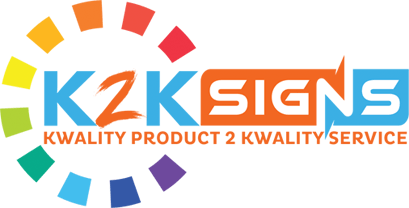What is Braille Signage and Who Needs It in Australia?
In Australia, Braille signage—called Braille and tactile signs—is essential for creating accessible environments.
These signs are legally required in many public and commercial buildings to assist people who are blind or have low vision.

This guide covers what Braille signage is, where and why it’s required under Australian law, how it is produced to meet compliance standards, who must install it, and how your business can ensure it meets legal obligations.
What is Braille Signage?
Braille signage in Australia refers to signs that feature both raised tactile text and embossed Braille dots positioned directly underneath the corresponding words.
These signs are designed to be read through touch, allowing people who are blind or have low vision to navigate spaces independently.
Braille signage is a mandatory component of accessible design in public and commercial buildings. It ensures compliance with national standards and promotes inclusive access.
Why is Braille Signage Important?
Australian Regulations: AS 1428.1 and the National Construction Code
In Australia, Braille and tactile signage requirements are governed by:
-
The National Construction Code (NCC) – formerly the Building Code of Australia (BCA)
-
The Disability Discrimination Act 1992
-
AS 1428.1 – Design for Access and Mobility
These standards ensure that signage is both functional and accessible. For example, AS 1428.1 mandates the placement, height, font, Braille translation, and contrast requirements for signage in public and commercial buildings.
Read more on the Australian Building Codes Board (ABCB)
How Are Braille Signs Produced?
Creating compliant Braille signage requires precision, durability, and a deep understanding of accessibility standards.
At K2K Signs, all our Braille and tactile signs are BCA/NCC compliant (Part D4D7, Specification 15) and fully aligned with AS 1428.1-2009.
Braille signs are produced by considering the following factors.
-
Design and layout – Text is converted into tactile uppercase sans-serif font, matching Grade 1 Braille.
-
Translation to Braille – We use certified software to ensure accurate Braille transcription by Australian standards.
-
Injection moulding – Our signs are injection moulded as a single unit, enhancing hygiene, durability, and tactile clarity.
- Embossing – Braille dots are precisely embossed (raised) to meet tactile specifications and longevity.
-
Engraving or UV printing – Text and icons are engraved or printed using high-contrast, non-glare finishes for visibility.
-
Material selection – We use weather-resistant and vandal-resistant materials like acrylic, aluminium, and polycarbonate, which are suitable for indoor and outdoor use.
-
Quality check – Every sign is checked against AS 1428.1 for compliance before delivery.
Where is Braille Signage Required?
As per AS 1428.1, Braille and tactile signs must be installed in areas and sectors listed below.
-
Accessible toilets
-
Stairwells and fire exits
-
Lift lobbies and lifts
-
Accessible hotel rooms
-
Educational, transport, medical and public buildings
Note: Signs must be installed on the latch side of the door between 1200 mm and 1600 mm from the floor.
What Makes a Braille Sign Compliant?
Your Braille signage must have the following characteristics to meet Australian compliance standards.
-
Raised, tactile letters (1–1.5 mm high)
-
Grade 1 Braille directly beneath the corresponding text
-
Matte finish and high contrast
-
Sans-serif, all-uppercase fonts
-
Rounded Braille dots (not flat or square)
-
Durable, non-reflective materials
Who Needs Braille Signage in Australia?
You’re likely required to install Braille signs if you manage or operate businesses listed below.
-
Offices and corporate buildings
-
Schools, universities, and childcare centres
-
Healthcare and aged care facilities
-
Hotels, motels, hostels
-
Government and council buildings
-
Shopping centres and public transport hubs
Custom Braille Signs by K2K Signs
At K2K Signs, we specialise in AS 1428.1-compliant Braille and tactile signs for various industries across Australia.
We have a collection of Braille signs that includes:
- Boys Toilet - Braille and Tactile Sign
- Cleaner - Braille and Tactile Sign
- Disabled Unisex Toilet LH - Braille and Tactile Sign
- Female & Female Ambulant Toilet - Braille and Tactile Sign
Please take a look at our range of Braille signage to find solutions tailored to your business needs.
Takeaway
Installing BCA/NCC-compliant Braille signage is critical to accessibility and legal compliance in Australia.
At K2K Signs, we manufacture each sign as a single, hygienic, injection-moulded unit, using durable, weather-resistant materials that meet all AS 1428.1-2009 standards.
With easy installation and no company branding printed on the face, our signs offer a professional finish that blends seamlessly into any environment.
FAQs
What is the standard height for installing Braille signage?
Between 1200 mm and 1600 mm from the finished floor level, as per AS 1428.1.
Are Braille signs mandatory in Australia?
Yes. They are required in many public, commercial, and government buildings under the NCC and Disability Discrimination Act.
Can I customise Braille signs for my business?
Absolutely. We offer complete customisation, including wording, branding, and materials.

